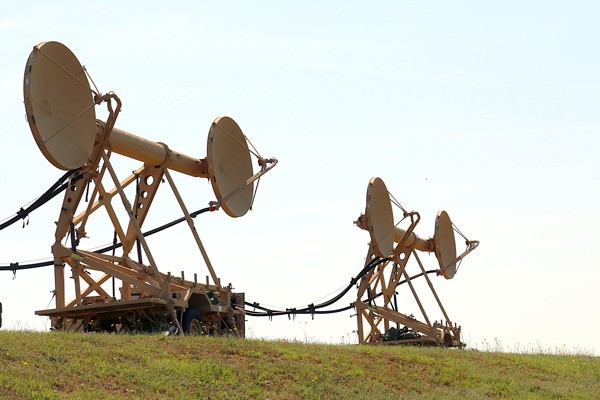Starting Monday, expect to see Army tents, generators, vehicles and other equipment at the Outlying Landing Field in Coupeville.
The Army’s 51st Signal Battalion (Expeditionary) is teaming up with sailors from Naval Air Station Whidbey Island to conduction communication training from March 28 through April 1.
The Army is bringing its troposcatter communications system, which includes two large pieces of equipment that look like Mickey Mouse ears.
The military has used troposcatter communications since the 1960s to transmit voice and data without satellites or high-frequency radio signals. The system transmits and receives microwave signals out of sight lines by bouncing radio signals off layers of the Earth’s atmosphere.
The outlying landing field at Coupeville was chosen because it provides a new, challenging and unique setting for the soldiers to validate their signal equipment on, said Capt. Lindsay Roman, a public affairs officer for the Army.
The battalion already operated the equipment in desert and mountainous environments in both Arizona and Yakima Training Center but has yet to do so on sea-level terrain provided by NAS Whidbey Island, she said.
The elevation and landscape at the site provide exclusive challenges that will enable the soldiers to be more prepared and flexible in future operations, she said. The training location also provides the opportunity to train with joint counterparts in different branches of the military.
The sailors who will team up with the Army are from NAS Whidbey’s Maritime Patrol and Reconnaissance Wing 10’s Mobile Tactical Operations Center 12. They use similar mobile systems while deployed overseas.
The scheduled training is not tied to electronic warfare.
While operating any military equipment comes with some form of risk, the Army has safety precautions in place for personnel in close proximity to the antennas, she said.
The setup includes a 7-by-590 foot clearance zone. Unless someone is standing directly in front of the antennas while transmitting, “you won’t be affected by the emissions transmitted,” Roman said.


